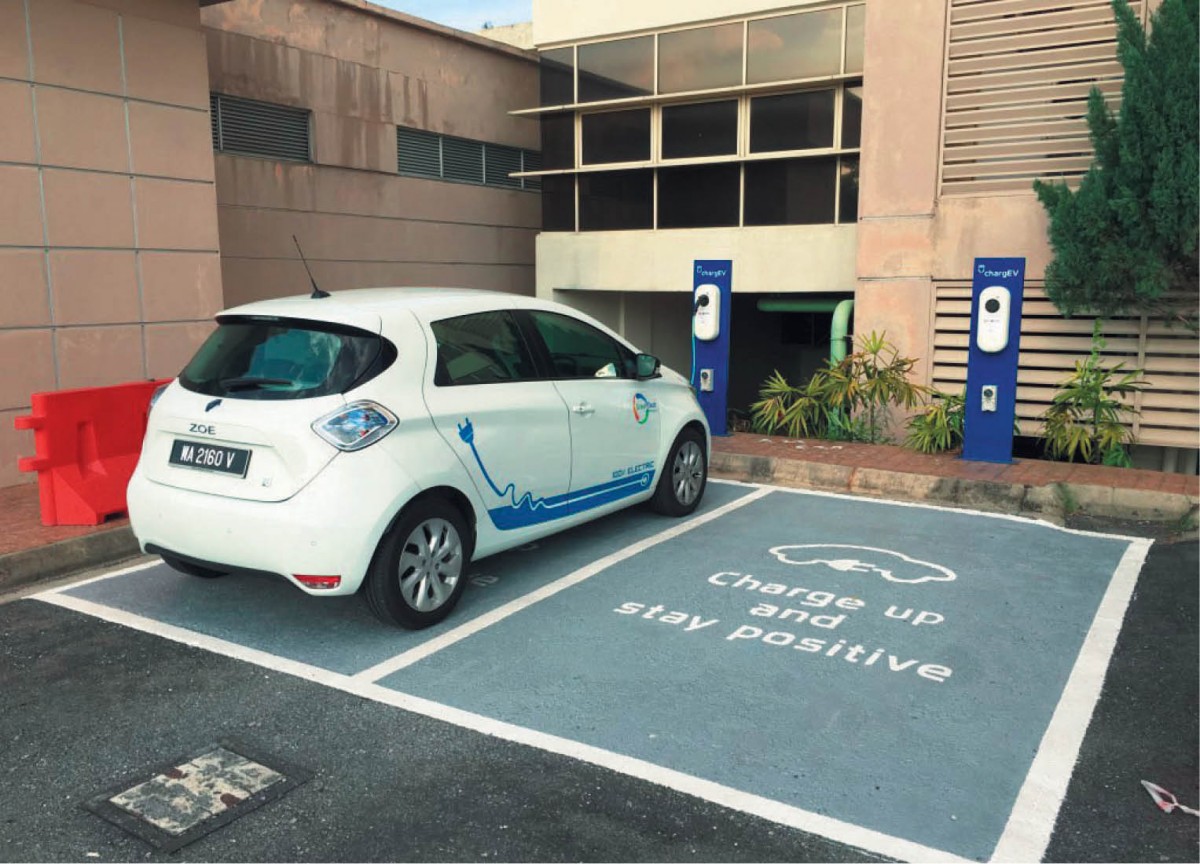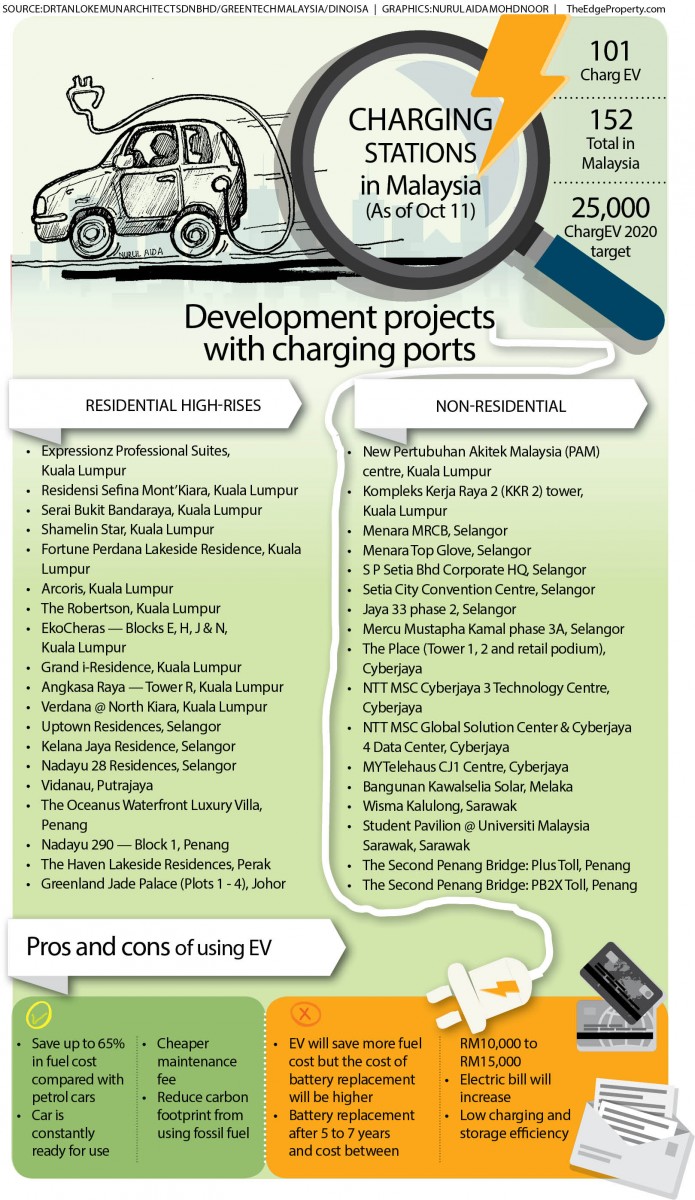
AS efforts are made to build a future with cleaner fuel, electric vehicles (EVs) are becoming more popular. And with more EVs on the road, the need for EV charging stations will also rise in tandem.
According to Malaysian Green Technology Corp (GreenTech Malaysia), there are six EV models available in the country namely Nissan Leaf, Renault Zoe, Renault Twizy, BMW i8, Volvo XC90 and Mitsubishi i-MiEV.
During the period from 2011 to 2015, some 130 units of these models were sold. In 2015, there was a 103.7% spike in year-on-year sales to 55 units from 27 units in 2014. Meanwhile, the number of EV charging stations has also risen.
GreenTech Malaysia estimated that there were about 67 EV charging stations in Malaysia as of Dec 31, 2015 of which 18 were ChargEV (Charge Electric Vehicle) stations under the organisation’s ChargEV programme.
The ChargEV programme was conceived with the purpose of creating a comprehensive market and ecosystem for EVs to thrive. The total number of charging stations has increased to 152 as at Oct 11 this year from the end of last year while ChargEV stations grew to 101 stations during the same period.
While the number of charging stations is increasing, EV owners living in high-rise strata properties still find it a challenge to find charging facilities in the properties where they live or work.
Furthermore, EV users may find it difficult to charge their cars because there are different types of ports in the market which may not be compliant with all EVs.
To address this issue, GreenTech Malaysia aims to roll out 300 ChargEV stations this year to improve accessibility to charging stations, and this will be extended to 1,000 stations by end-2017, said its group chief executive officer Ahmad Hadri Haris.
The majority of the ChargeEV stations will be located in Selangor (500), followed by Kedah (150), Johor (110), Melaka (90), Perak (60), Pahang (50) and Terengganu (40).
By 2020, the organisation aims to have 25,000 stations to support Malaysia’s target of deploying 100,000 EVs in the next five years. The stations will be located at prime, convenient public locations including local councils, shopping malls, hotels, office blocks and along major highways across Malaysia.
“If we ask all car companies to put their own charging stations (across the country), we may end up with all sorts of different stations which will be very inconvenient for EV users,” Hadri said.
Nevertheless, one cannot ignore the fact that demand for charging facilities in buildings where people live and work is rising as more people choose to drive EVs, said Dr Tan Loke Mun, principal of Dr Tan Loke Mun Architect Sdn Bhd.


In the beginning, developers who installed charging ports in their projects probably did it to get higher points to achieve a Green Building Index (GBI) rating, he said.
However, with EVs becoming more common, developers will have no choice but to change and make charging facilities part of their projects, he added.
Loke Mun said electric cars are definitely the future and currently stratified properties have reached a tipping point where EV charging ports have become an essential and important facility for new projects.
“The tipping point has arrived, so developers, building owners, project managers, architects and consultants have to find a way to provide and maintain charging ports (in a project), and maybe even try to generate revenue from these ports,” he said.
Loke Mun suggested that one floor of an office or high-rise residential building be installed with car charging ports and be designated as an EV car park.
“If someone wants to use the ports to charge their EV, they have to pay a rate, just like parking fees,” he said.
Installation of EV charging facilities
According to Hadri, in the long run, property developers and building owners can install normal power points like three-pin sockets in condominiums and office buildings for charging EVs. “Those sockets only cost around RM300. An EV can be charged via a simple power point, and the power point can be metered, so that the electricity bill can be charged to the owner,” he explained.
“For common parking lots in a condominium, we can put one or two fast chargers which will cost roughly between RM6,000 to RM10,000,” he added.
Professor of intelligent systems at the faculty of engineering at The University of Nottingham Malaysia Dino Isa believes that it is possible to provide fast charging stations for high-rise or multistorey car parks but they would cost more because of the higher installation cost.
“Some technologies can use plug outlets, so the power electronics would be inside the car itself, but space is limited and the current requirement for some batteries would make charging time very, very long,” he said.
According to Chris Tan, lawyer and managing partner of Chur Associates, EV owners who intend to install charging ports at their parking bay will need to obtain approval from the management of the building.
Although the parking bay belongs to the unit owner, installing a charging port or station may involve cabling works at common zones of the building, so owners need to get the relevant approval, he said.
Chris pointed out that the charging ports and stations should come with electricity meters to measure the amount of electricity consumed by the EV user to help the building management collect the usage fee from the user.

This story first appeared in TheEdgeProperty.com pullout on Oct 14, 2016, which comes with The Edge Financial Daily every Friday. Download TheEdgeProperty.com pullout here for free.





